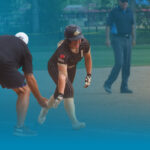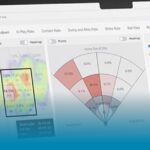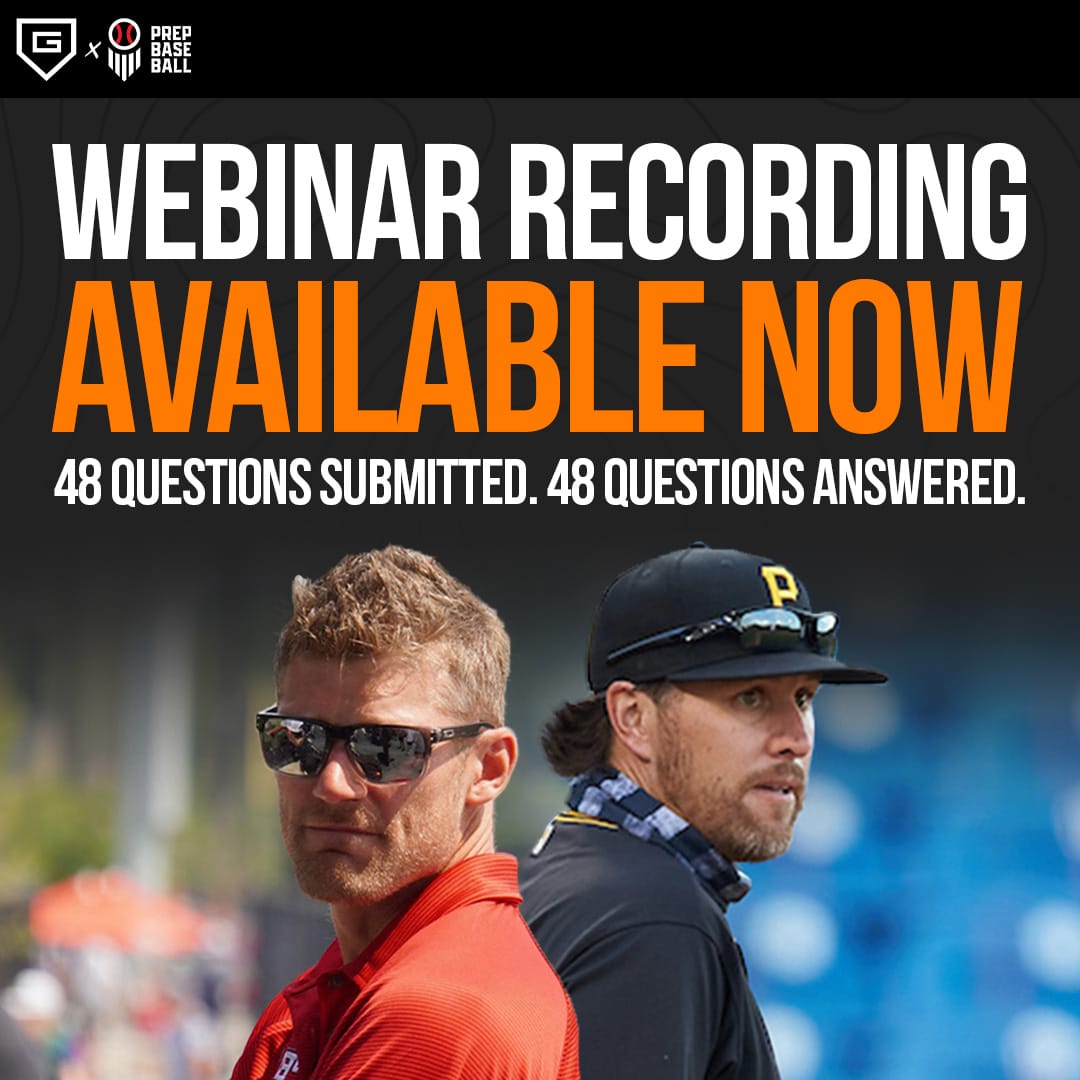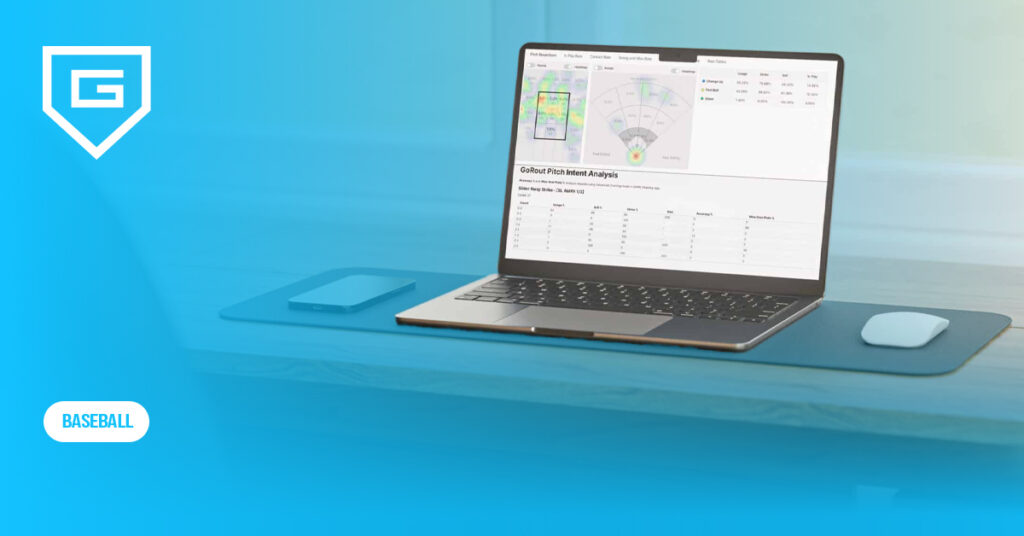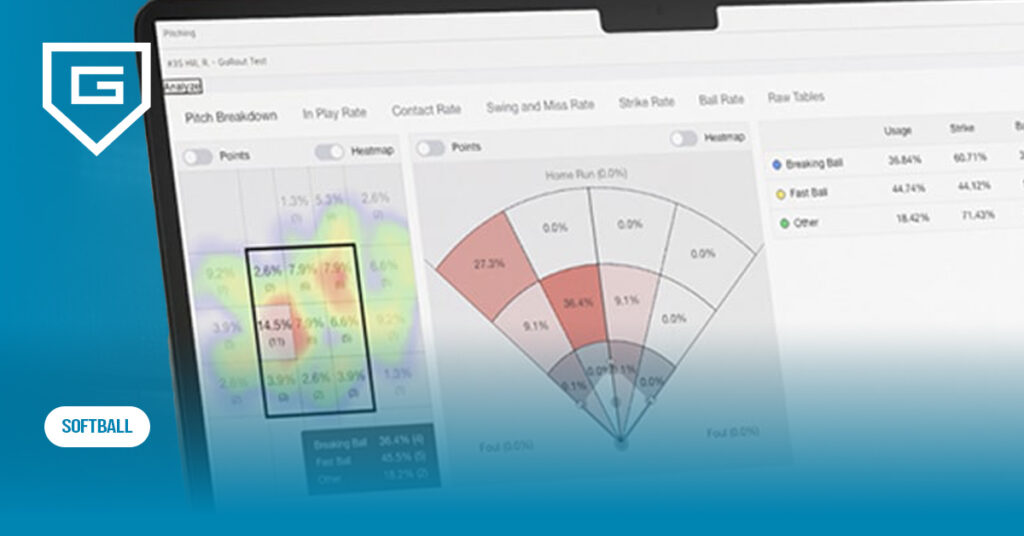11 Baseball Hitting Drills to Improve Swing and Contact
Reading Time: 10 minutes
Reading Time: 10 minutes
When it comes to refining mechanics and developing confidence at the plate, nothing beats a consistent routine of baseball hitting drills. Whether you’re coaching young players or preparing more experienced athletes for competitive play, the right drills can transform how hitters approach every pitch and improve their overall performance. Regular practice allows players to react more instinctively under pressure, and improve their results at the plate.
Combining sports coaching technology, such as the GoRout coach-to-player communication system, with baseball hitting drills can further increase a player’s focus and execution on game day.
GoRout Diamond helps coaches communicate pitch calls, defensive notes, and signs on offense to players in real time during games. It streamlines communication, helping players focus on executing their job rather than interpreting complex signs.
In this article, we will share the 12 best baseball hitting drills you should include in your practices. Additionally, we will explain how to use GoRout Diamond as a coaching technology to improve your team’s results significantly.
Foundational Baseball Hitting Tee Drills For Hitting Mechanics

Foundational hitting tee drills are an essential part of batting practice that helps players master the basics of hitting mechanics. These drills help players focus on their stance, swing path, and contact point without a moving ball.
Baseball coaching tools like tees provide a simple and effective way to fine-tune a player’s swing and develop consistent mechanics.
These key baseball tee-hitting drills build a strong foundation for young players and better performance at home plate.
One-Handed Tee Swings
The one-handed tee swing is a great hitting drill for youth players. It strengthens each hand individually to develop better bat speed, control, and balance in the swing. A hitter isolates each hand to refine hitting mechanics and follow the proper path through the hitting zone.
Coaching cues:
- Start with your top hand choked up on the bat and focus on a smooth, controlled swing
- Keep your elbow close to your body
- Switch and use your bottom hand with fluid motion while maintaining balance
- Focus on making clean contact with the ball on the tee and follow through
Start by taking multiple swings using just the top hand and pay attention to control and balance. Then, switch to using only the bottom hand. Progress to two-handed swings using the strength and control gained from the previous drills. Increase the speed and intensity of the swings to simulate game-like conditions during batting practice.
Two-Tee Inside-Out Drill
The two-tee inside-out drill teaches players to keep their hands in on inside pitches while maintaining control of the swing path. It teaches players to stay inside the ball and make solid contact to avoid being jammed on inside pitches.
Coaching cues:
- Set up two tees—one slightly in front and inside, the other directly over the plate
- Hit the inside ball first to train the hands to work through the inner half of the ball
- Keep the barrel of the bat inside the ball and aim for clean contact to drive it up the middle or to the opposite field
- Avoid rolling the wrists too early and maintain a strong top-hand finish
Begin the drill by focusing solely on the first tee that simulates an inside pitch. The hitter must drive the ball with proper mechanics. Next, introduce the second tee to reinforce control over the swing path. Gradually increase the speed and intensity of the drill.
Tee Drill for Opposite Field Hitting
A hitter practices this drill to work on keeping the bat inside the ball and make solid contact to the opposite field.
Coaching cues:
- Position the batting tee slightly outside and adjust the height so the ball is in line with the outside corner of the home plate
- Stay balanced and keep your hands inside the ball
- Try to hit the ball to the opposite field by fully extending the arms
- Avoid pulling off the ball and maintain a smooth, controlled swing path
Set up the tee for a stationary ball and make consistent contact to the opposite field. Adjust the tee to different locations and heights to simulate various pitch locations as the player improves. Increase intensity by chaning to soft toss after the player shows confidence with the tee work.
Baseball Hitting Soft Toss Drills

Soft toss drills are great for improving timing, hand-eye coordination, bat path, and bat control. A coach teaches players these drills to boost their hitting mechanics and swing while reacting to a moving target.
Baseball hitting soft toss drills are done at different heights, speeds, angles, and ball placements to build consistency through the swing.
Reactive Soft Toss
The reactive soft toss is a hitting drill that sharpens reaction time and decision-making skills in the strike zone. This drill challenges hitters to quickly identify and react to different pitch locations and speeds.
Coaching cues:
- Focus on quick recognition of the ball’s flight path as it leaves the throwing hand
- Stay balanced throughout the swing to maintain control and make solid contact
- Adjust to changing pitch heights and angles and hit the ball where it’s pitched
- Keep your eyes on the ball and react to the toss with no hesitation
Start the drill with standard soft toss so the hitter can get used to tracking the ball and making contact. Slowly introduce variability by tossing the ball at different heights, angles, and speeds. Increase the difficulty by adding inside and outside pitches, forcing the hitter to react more quickly.
Weighted Ball Soft Toss
This is a great drill for building strength and bat control. Hitters use heavier balls to drive through contact, increase power, and improve their swing. This baseball drill also helps players stay balanced and use their entire body when hitting.
Coaching cues:
- Drive the ball with full extension, using your entire body to generate power
- Maintain balance throughout the swing as the weight of the ball increases
- Keep your hands inside the ball
- Concentrate on making solid, clean contact with the ball while controlling the added weight
Begin with lighter-weighted balls and gradually increase the weight while maintaining proper form and making consistent contact. As hitters gain strength and control, integrate regular balls into the drill to compare how the added weight influences their swings.
Lateral Soft Toss
The lateral soft toss is a hitting drill that teaches adjusting to pitches in every location across the plate. It helps hitters stay balanced and adjust their swing based on pitch placement to the inside and outside corners.
Coaching cues:
- Stay balanced and centered throughout the swing
- Adjust the swing path based on the toss
- Drive inside pitches to the pull side and outside pitches to the opposite field
- Keep your hands inside the ball on inside pitches to avoid pulling off too early
Start with slow and deliberate lateral tosses. Increase the speed and vary the ball placement to challenge the hitter to adjust quicker to inside and outside tosses. Simulate different pitch speeds and angles once players are comfortable with the drill.
Baseball Hitting Front Toss Drills

Front toss drills boost timing, hand-eye coordination, and consistent contact with the ball. They simulate a more realistic pitch trajectory than soft toss.
A coach uses these hitting drills to practice reacting to live pitches and prepare hitters for game-like conditions.
Rhythm and Timing Drill
The rhythm and timing drill is excellent for adding smooth, consistent timing to a hitter’s swing. Hitters concentrate on rhythm to sync up and swing with the incoming pitch for better contact with the ball.
Coaching cues:
- Create a smooth load as the pitcher begins the motion
- Stay relaxed and balanced throughout the swing for a good rhythm
- Time your load and swing to match the speed of the toss
- Follow through fully after contact
As the player gets more comfortable, change the speed and location of the tosses to practice adjusting while keeping a smooth swing. Gradually increase the intensity of the tosses.
J-Hop Front Toss
The J-hop front toss is a great drill for swing power, balance, and explosiveness. A small hop before the swing shows hitters how to engage their lower body for more power.
Coaching cues:
- Start with a slight hop forward to generate momentum
- Use the lower body to drive through the swing, not just the arms
- Time the hop to coincide with the toss
- Keep your eyes on the ball throughout the hop
Use a slow, controlled hop and increase the speed as players improve. Gradually change the toss location. It ensures players wtay focused on the ball while engaging their lower body for more power.
Low-High-Low Front Toss

This hitting drill guides hitters on quickly adjusting to different pitch heights. To handle unpredictable pitch locations during games, hitters should stay balanced and focused while hitting pitches at various heights.
Coaching cues:
- Stays balanced throughout each swing and pitch height
- Track the ball carefully and adjust your body positioning to each toss
- Stay patient and avoid rushing through swings
- Engage your legs to generate power and drive through lower pitches without lunging
Make slow tosses at three different heights—low, high, and low again. It helps the hitter build a rhythm and get used to the changing pitch levels. Then, make the tosses more unpredictable for quicker adjustments. Introduce higher speeds or more variance in pitch heights over time.
Live Hitting Baseball Situational Drills

Live-hitting baseball situational drills are a part of batting practice that simulates real-game hitting. These drills practice situational hitting—hitting with runners in scoring position or advancing a runner.
Baseball players do live hitting to improve decision-making, timing, and execution under pressure and mentally prepare for batting during games.
Six-Out Drill
The six-out drill gives teams a controlled, timed environment to create pressure while batting. It mimics the last six outs of a game when a team is behind in runs.
This drill helps build consistency, adaptability, and mental toughness when the pressure is on to get the win.
Coaching cues:
- Make contact with each pitch
- Stay mentally engaged and approach each at-bat with a fresh mindset
- Adjust your swing based on the pitch location and type
- Communicate with your teammates to understand the game situation
Begin with a set number of pitches for each hitter. Then, add pitches and different game scenarios—such as hitting with two outs or advancing runners. Throwing faster pitches challenges adaptability and replicates the pressures of actual games.
Knockout
Knockout is a great hitting drill to simulate competitive game-like situations. Players must complete sacrifice bunts, hit-and-runs, or stolen bases under pressure to boost focus and precision on the diamond.
Coaching cues:
- Complete controlled, accurate bunts to specific target zones
- Drive the ball to opposite fields when advancing runners
- Make quick, decisive reads on base-running situations
- Stay locked in mentally
Start with simpler skills like bunting into targeted areas. As players progress, incorporate more strategic variety like stealing bases and itting behind runners. The drill is fun for all skill levels and ages.
Incorporating GoRout into Baseball Practice
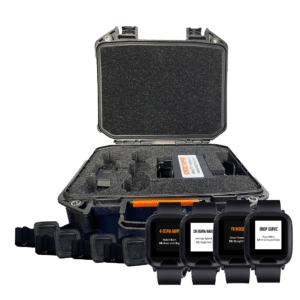
GoRout Diamond is an innovative baseball signals system that transforms teams’ communication during practices and games.
This baseball pitch-calling system helps coaches send baseball coaching signs, play calls and strategic instructions directly to batters via wearable communication devices.
The ability to receive real-time updates allows batters to adjust their strategies based on the current game situation. They can change their approach against different pitchers or defensive setups, which is crucial for success in competitive environments.
GoRout equipment ensures sharing quick, accurate pitch calls, defensive shifts, and offensive strategies—bunts, steals, and hit-and-run plays—with just a single tap, leading to improved focus and execution on the field.
On-field coaches app
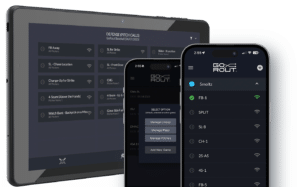
The GoRout on-field coaches app is one of the best baseball coaching tools. It uses an intuitive, user-friendly interface that makes managing team communication simple and efficient.
With just a few taps, coaches create and update pitch calls, defensive shifts, and offensive plays in real time.
The app sends signals directly to players devices to improve efficiency, protect calls, and eliminate missed signs. It operates independently of Wi-Fi, using GoRout Air™ for secure and uninterrupted communication.
Experience the app firsthand.
On-field player device
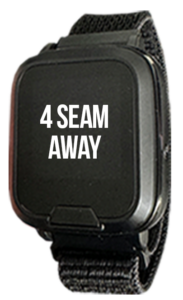
The on-field player devices helps athletes receive real-time pitch calls and strategy.
Players receive real-time instructions with a secure, encrypted connection. The device’s durability and weather resilience ensure reliable performance in any condition. The system works straight out of the box so there is no need to worry about setup or onboarding the team.
It is a perfect tool to boost player focus and minimize distractions during practices and games.
Why Choose GoRout Diamond for Your Baseball Team
GoRout Diamond is an advanced electronic pitch-calling system that improves communication between coaches and players. It provides several key benefits:
- Efficient communication: GoRout Diamond enables coaches to provide clear, real-time instructions to players, minimizing delays and confusion on the field.
- Offline functionality: The system does not rely on Wi-Fi, ensuring smooth operation even in areas with limited or no internet connectivity.
- Customizable settings: You can adapt and set up GoRout Diamond to your specific practice needs.
- Weather resistance: Our pitch-calling devices withstand various weather conditions, providing reliable performance during outdoor practices and games.
- Secure communication: GoRout Diamond features end-to-end encryption and a four-way privacy screen on each player’s device, ensuring that team communications and strategies remain confidential.
Incorporating GoRout Diamond allows you to streamline communication, improve player development, and create a more efficient and effective team environment.
Get a quote today.
Conclusion About Baseball Hitting Drills
Baseball hitting drills are key for refining swing mechanics, improving contact, and preparing players for in-game scenarios.
Coach-to-player communication systems like GoRout help coaches provide instant feedback and guide player development throughout their baseball practices.
FAQs About Baseball Hitting Drills
Let’s answer the most common questions about baseball hitting drills.
What is the best way to practice hitting a baseball?
The best baseball hitting drills to practice your swing mechanics are soft toss drills, timing drills, front toss drills, and tee drills.
What are the 7 steps for hitting a baseball?
- Stance: Head and eyes level with the pitcher, loose hands
- Stride: Short, low step toward the pitcher
- Power position: Front arm and knees flexed, eyes, shoulders, and hips are level
- Initiate lower body: The back leg and ball of the foot pivot
- Hands and rotation: Hands to the ball, rotate on the balls of your feet and through your hips
- Contact: Head down, stiff front leg, back leg forms an “L” shape
- Follow through: Top hand rolls over, stiff front leg, “L” shaped back leg
How can I improve my hitting power in baseball?
Players improve hitting power by doing deadlifts, seated pull-downs, dumbbell bench presses, squatting, seated rows, and forward lunges.

